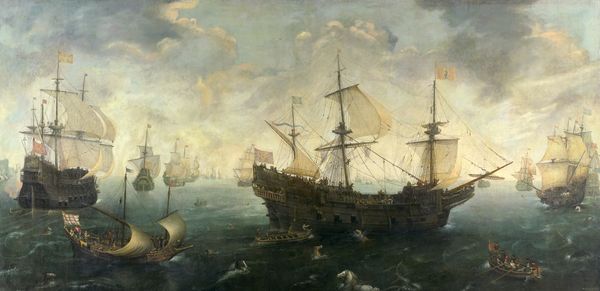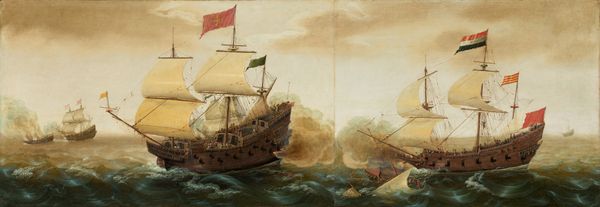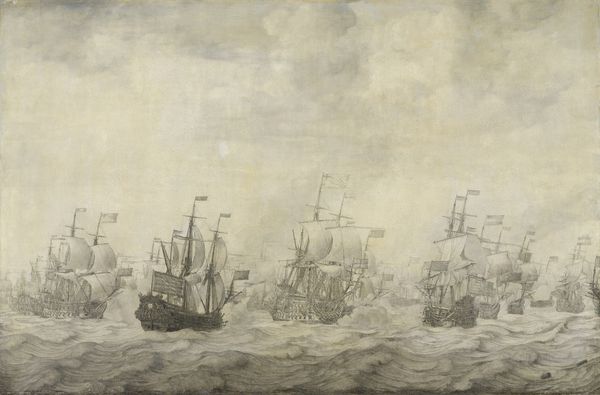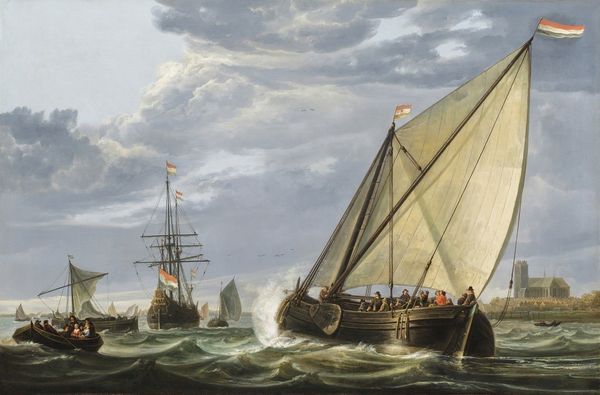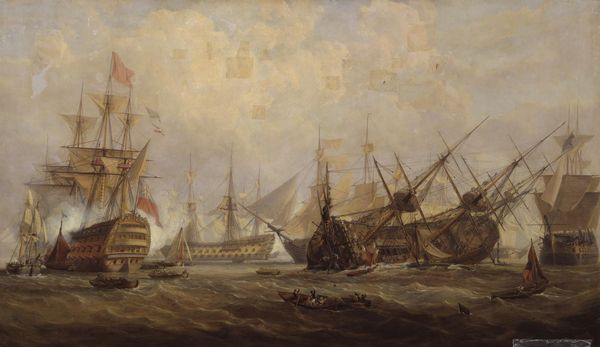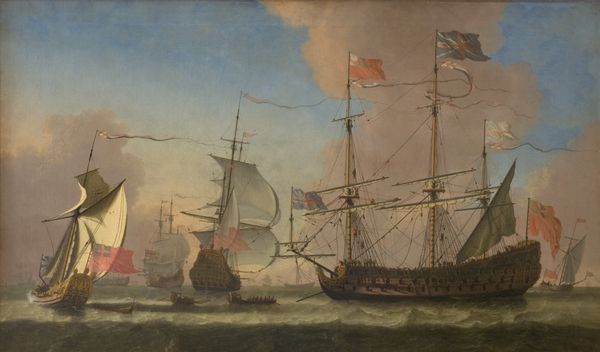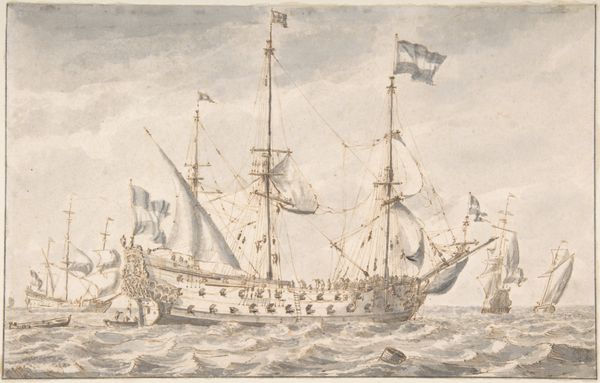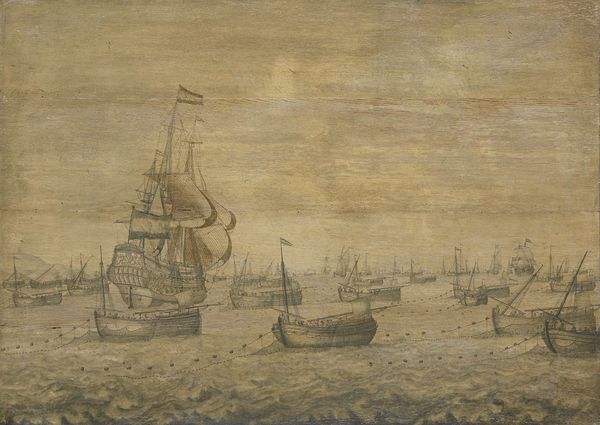
#
acrylic
#
charcoal drawing
#
painted
#
possibly oil pastel
#
oil painting
#
acrylic on canvas
#
underpainting
#
painting painterly
#
watercolour illustration
#
watercolor
Dimensions: support height 43.5 cm, support width 29.3 cm, outer size depth 4 cm
Copyright: Rijks Museum: Open Domain
Editor: Here we have "An Amsterdam East Indiaman," an oil painting by Abraham de Verwer, dating from around 1625 to 1650. What immediately strikes me is the impressive scale of the ship. How do you interpret this work? Curator: I'm immediately drawn to the materiality and production. Look closely. It's not just about depicting a ship, but about showcasing the sheer *stuff* that enabled Dutch maritime power. What kind of wood formed the hull? Where did the canvas for the sails come from, and who wove it? Who made the ropes? Consider also the social and political capital being transferred around the globe at that time and consider this artist's potential intentions when constructing this imagery. Editor: So, you're saying the painting isn't just a pretty picture, but evidence of the economic and colonial systems? Curator: Exactly. We need to consider the consumption this ship represents and the raw labor behind it. How much material manipulation was needed, what tools did the sailors work with, and who was truly benefitting from the Dutch expansion that this image highlights. Editor: That makes me rethink the details I originally saw as purely aesthetic, like the details in the billowing sails. Are you saying that they carry meaning related to social structure, labour practices, and other complex human endeavours? Curator: Yes, every element can be interrogated. The paint itself is a manufactured product derived from global resources, pointing to complex trade networks that fuelled artistic creation as well. The pigment’s value can then be tied back to those that had to do without that pigment's availability in the materials available to them during this same era. Editor: I hadn't thought about it that way at all. Thank you. I'm definitely leaving here with a fresh appreciation for looking past the surface. Curator: It is my pleasure.
Comments
No comments
Be the first to comment and join the conversation on the ultimate creative platform.
